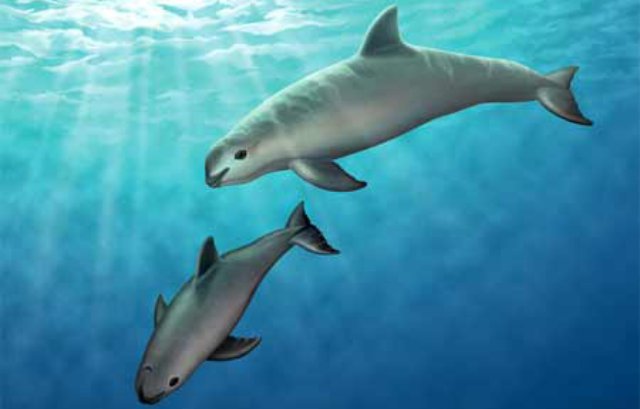 Mexico has begun testing unmanned aircraft that could help it save the critically endangered vaquita marina, the world’s smallest porpoise, which is threatened by illegal fishing in the upper Sea of Cortez.
Mexico has begun testing unmanned aircraft that could help it save the critically endangered vaquita marina, the world’s smallest porpoise, which is threatened by illegal fishing in the upper Sea of Cortez.
Alejandro del Mazo, an assistant prosecutor with Mexico’s environmental protection agency, said Monday he hopes to have three drones patrolling the vaquita’s habitat in coming months. The sea, also known as the Gulf of California, is the only place vaquitas are found.
“We are considering the use of advanced technology, because drones would allow us to have permanent aerial patrols in the area and be able to react much more efficiently and quickly,” Del Mazo said.
Fewer than 100 of the shy, elusive porpoises remain. The vaquita is threatened by illegal gillnet fishing for totoaba, a large fish whose swim bladder is prized by chefs in China. Nets used by fishermen can trap the tiny porpoises, commonly about 5 feet (1.5 meters) long.
Del Mazo said Mexican authorities last year arrested 17 people for trafficking in totoaba bladders.
Luis Fueyo, the head of Mexico’s national protected areas, said Mexico also is increasing cooperation with U.S. authorities, given that dried totoaba bladders often are clandestinely shipped through California and then to China.
Mexican authorities have proposed a $37 million plan that would ban gillnet fishing in the upper gulf. The plan could be implemented in March following mandatory public consideration.
An area around the mouth of the Colorado River Delta already is protected, but the new proposal would expand the area closed to net-fishing southward to include almost all of the vaquitas’ known range.
The plan presented by the Agriculture and Fisheries Department would pay some fishermen to patrol the area to help deter violations of the ban. Some non-threatening net fishing techniques would be allowed during certain months of the year.
The ban initially would be in place for two years.
Luis Fueyo, the head of Mexico’s national protected areas, noted that a longer-range plan is needed.
“The vaquita can’t recover in two years, because they only reproduce every two years, and only 25 of those left are of reproducing age,” he said. “In order to recover a population of 5,000 individuals, there will have to be a long range plan of 20 or 30 years.”
Experts agree that trying to breed vaquitas in captivity isn’t an option because it would not be feasible to capture or hold a sufficient number of them. Furthermore, with so few vaquitas spread over such a wide area, chasing down and catching them would risk killing off the few remaining individuals.
On the Pacific side of the Baja California Peninsula, authorities said, there was good news about the grey whale which calves there in lagoons and bays. Some 141 whale calves were found in the Ojo de Liebre lagoon, an increase of 8 percent over the previous year, and in the San Ignacio lagoon, there were 34 calves, about five times as many previously counted.
Source: ABC News
